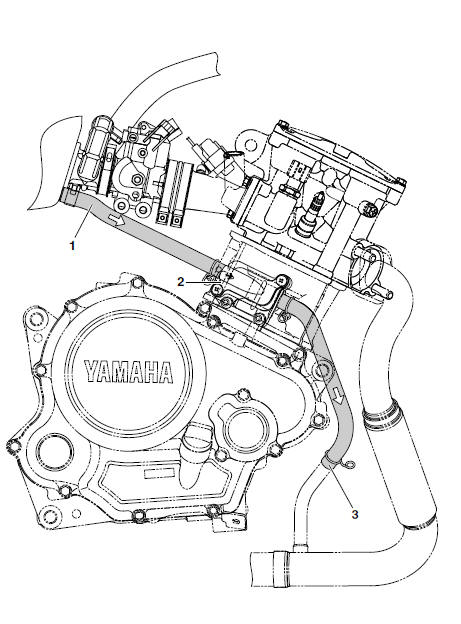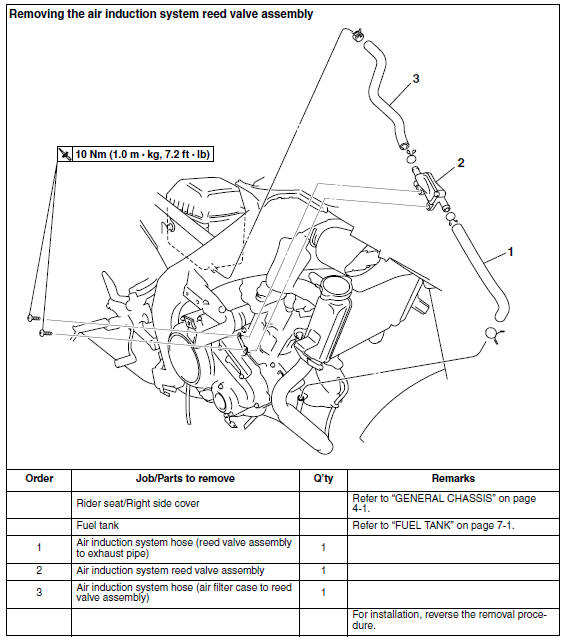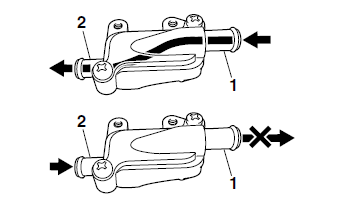Yamaha YZF-R125 Service Manual: Air induction system

1. Air induction system hose (air filter case to reed valve assembly) 2. Air induction system reed valve assembly
3. Air induction system hose (reed valve assembly to exhaust pipe)

Checking the air induction system
Air injection
The air induction system burns unburned exhaust gases by injecting fresh air (secondary air) into the exhaust port, reducing the emission of hydrocarbons. When there is negative pressure at the exhaust port, the reed valve opens, allowing secondary air to flow into the exhaust port.
The required temperature for burning the unburned exhaust gases is approximately 600 to 700 C (1112 to 1292 F).
1. Check:
- Hoses
Loose connections
 Connect
Connect
properly.Cracks/damage
 Replace.
Replace. - Cracks/damage
 Replace.
Replace.
2. Check:
- Air induction system reed valve assembly operation
a. Blow air into the pipe "1" of the air induction system reed valve assembly and check that it comes out from the pipe "2".
b. Blow air into the pipe "2" of the air induction system reed valve assembly and check that it does not come out from the pipe "1".

c. If faulty, replace the air induction system reed valve assembly.
 Installing the throttle body
Installing the throttle body
1. Install:
Throttle body joint clamps
NOTE:
Align the projections "a" on the throttle body joint
with the slot "b" in each throttle body joint clamp.
2. Install:
Throttle body joint ...
Other materials:
Identification numbers
Record the key identification number,
vehicle identification number and model
label information in the spaces provided
below for assistance when
ordering spare parts from a Yamaha
dealer or for reference in case the vehicle
is stolen.
KEY IDENTIFICATION NUMBER:
VEHICLE IDENTIFICATION ...
Loading
Adding accessories or cargo to your
motorcycle can adversely affect stability
and handling if the weight distribution
of the motorcycle is changed. To avoid
the possibility of an accident, use extreme
caution when adding cargo or
accessories to your motorcycle. Use
extra care when ridi ...
Checking the cylinder head breather hose
1. Remove:
Left side panel
Refer to "GENERAL CHASSIS" on page 4-1.
2. Check:
Cylinder head breather hose "1"
Cracks/damage → Replace.
Loose connection → Connect properly.
CAUTION:Make sure the cylinder head
breather hose is
routed correctly.
...

